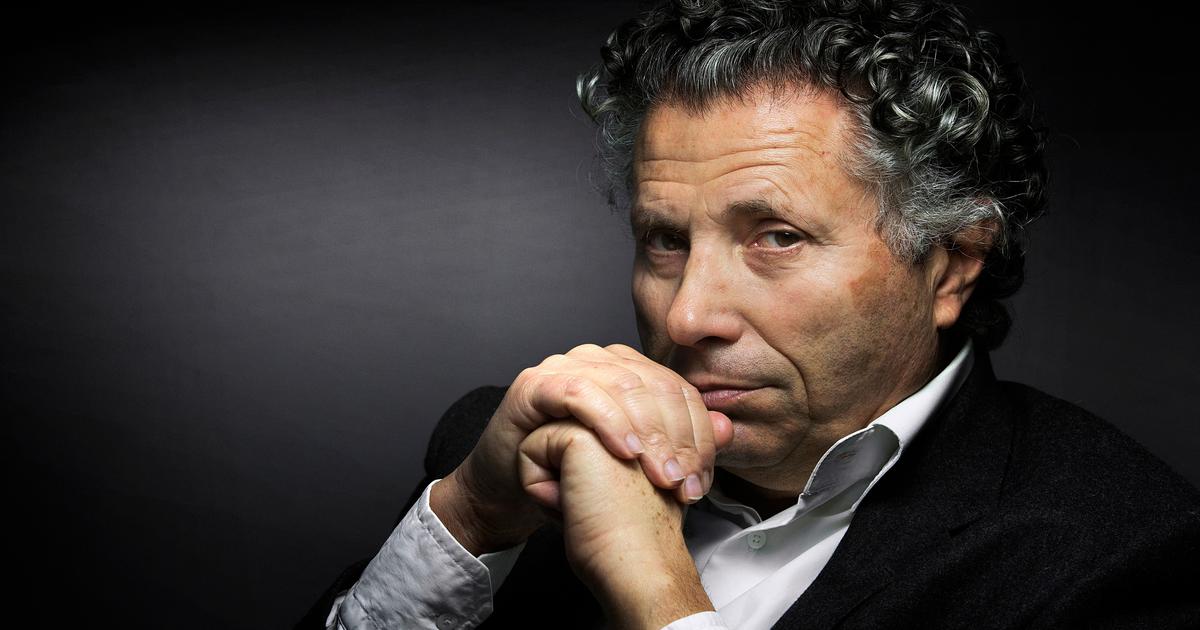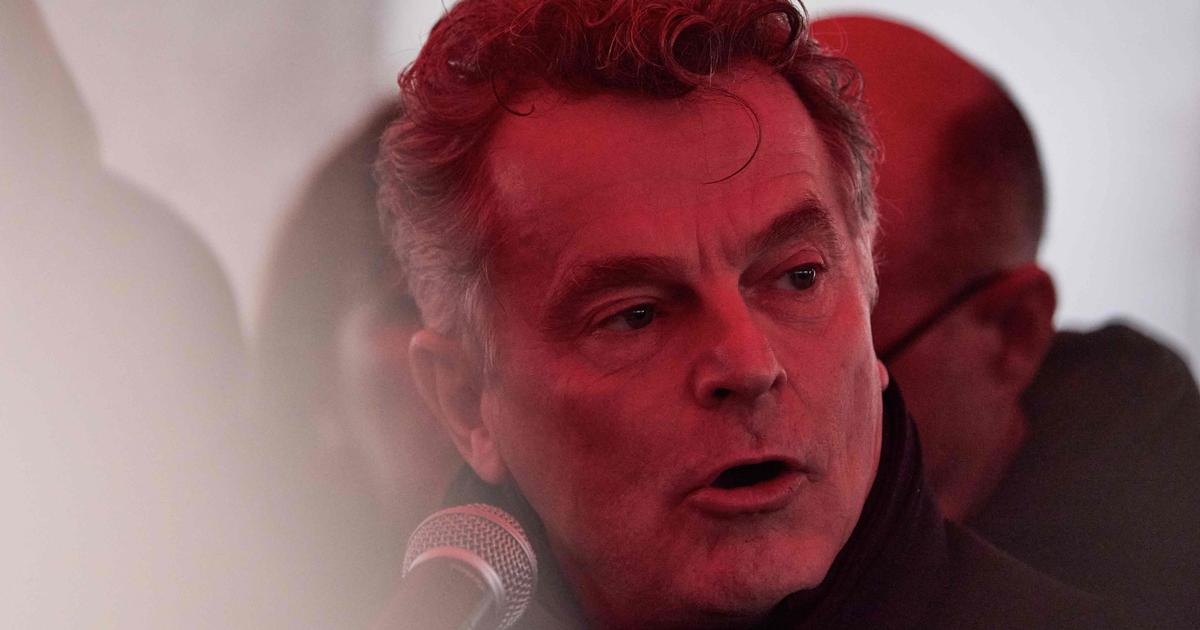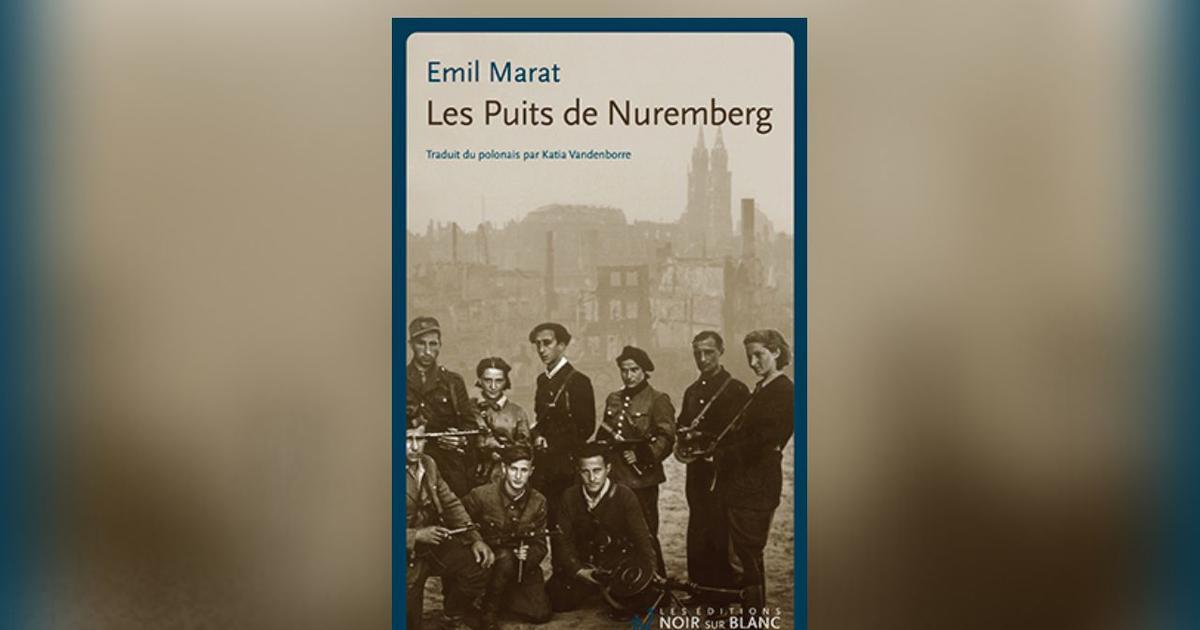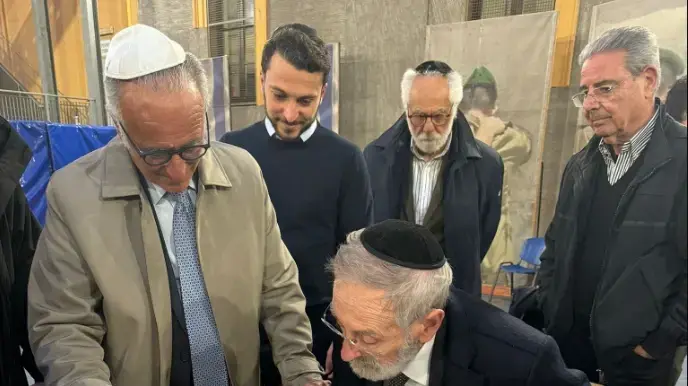A series of photos of the Warsaw Jewish ghetto
surreptitiously taken by a Polish firefighter during the anti-Nazi uprising
80 years ago,
and recently found in a barn, have been unveiled in the Polish capital.
"Photos taken by Germans make up almost all of the photographic documentation of the Holocaust. Today we imagine the ghetto through their gaze," historian Jacek Leociak told a lecture at the Museum of the History of Polish Jews.
"This roll is an invaluable document because it goes beyond the German perspective, that of the executioners who photographed the Jews as anonymous, dehumanized victims," he added.
The Germans systematically set fire to buildings to drive out the hiding insurgents (ZL Grzywaczewski/Maciej Grzywaczewski/ AFP).
The photos do not show the fighting.
In one of them, taken from a high place, a group of Jews, men, women and children, is
escorted by
armed German soldiers towards Umschlagplatz, from where they left for the extermination camps.
In another, on a deserted street, thick smoke covers buildings, while debris and cables are visible on the road.
In the third,
firefighters put out burning buildings.
All images show an atmosphere of apocalypse.
Photos not taken by Germans
"They are the only photos that were not taken by Germans (in the ghetto during the insurrection) and that were not taken for propaganda purposes," said Zuzanna Schnepf-Kolacz, one of the curators of the exhibition "Around us, a Sea of Fire", which will present them to the public starting in April.
In all, 33 photos of the ghetto are on this roll miraculously found in December.
They were all taken by Zbigniew Grzywaczewski, a Polish firefighter who was summoned to
put out fires caused by the Nazis
after the Warsaw ghetto insurrection broke out on April 19, 1943.
Courtyard of the Warsaw ghetto after the revolt of April 1943 (ZL Grzywaczewski/Maciej Grzywaczewski/ AFP).
The Germans systematically set buildings on fire to draw out hidden insurgents.
The Warsaw Ghetto was created by the Germans one year after the invasion of Poland in 1939.
Its objective was
to exterminate its inhabitants through starvation and disease or deport them
to the Treblinka extermination camp, 80 kilometers east of Warsaw.
On April 19, 1943, a few hundred Jews attacked the Nazis, choosing to die with weapons in their hands rather than be led to the gas chambers.
The roll of photos found in a barn (ZL Grzywaczewski/Maciej Grzywaczewski/ AFP).
Only twelve photos of this scroll were hitherto known as copies made on poor quality paper, poorly framed, and the scroll was long considered missing.
The copies were given by the author to a Jewish family who hid in their apartment during the war and later emigrated to the United States.
In the 1990s, they were offered by that family to the Holocaust Memorial in Washington.
Just six months ago the organizers of the upcoming exhibition, who knew of the prints, contacted the photographer's family in hopes of finding other photos.
unique photos
Zbigniew's son, Maciej, found the
old scroll, with its edges somewhat damaged
, in a decades-forgotten cardboard box containing photo files of his father, who died in 2003.
"My father never told us that he had taken those photos in the ghetto, perhaps because it was very hard for him. I recently learned that the paper copies were in Washington," Grzywaczewski explained.
The aftermath of the Warsaw ghetto riot (ZL Grzywaczewski/Maciej Grzywaczewski/ AFP).
"At the request of the curator of the exhibition, I began to search for the scroll without success for a long time. Finally, looking in the last box of the several ones where my father's photographic archives were, I found the scroll."
"In the scroll you can also see photos of my mother, her family and images of the ghetto. We can say that this scroll could be called 'war and love,'" he added.
His father also
kept a diary during the war.
In May 1943, he noted: "I think I will always keep in my memory the images of those silhouettes wavering with hunger and fear, dirty, destroyed. Of those people shot en masse, with survivors walking over the corpses of those who were killed."
AFP Agency.
look also
"Short mom, I don't want you to feel my screams when I'm dying"
look also
For this photo she is punished with 74 lashes and 10 years in prison
look also
He is 8 years old, renounced a millionaire inheritance and entered a monastery
GML




/cloudfront-eu-central-1.images.arcpublishing.com/prisa/OFIE3IOCHJH4RI645WWWIXYPFM.jpg)








/cloudfront-eu-central-1.images.arcpublishing.com/prisa/KMEYMJKESBAZBE4MRBAM4TGHIQ.jpg)

